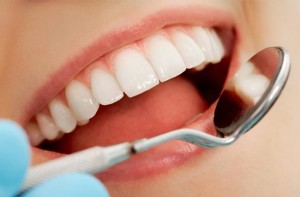Do you feel something strange in your mouth? Do your teeth move? When it is mild, mobility can be physiological in nature, it becomes a wake-up call if it is more pronounced. In this article we will find out together what are the symptoms, causes and remedies of dental mobility. But be careful! To dispel any doubts and not be afraid to carry out more normal activities, such as brushing your teeth, consult your dentist.
Movable teeth, symptoms and causes
 Swollen, painful and bleeding gums, bad breath, these are the symptomatic premises of a periodontal disease or pyorrhea, which can be confused with gingivitis. Only by consulting your dentist and with a periodontal survey, which consists of the microbiological analysis of the gingival pockets and specific radiographs, you can be sure that it is periodontitis and know if your gingival recession is more or less serious (according to the four classes by Miller). The symptoms, previously indicated and common in the initial stages, worsen as the problem progresses: with the increase in the interdental space, the presence of pus, the gingival thinning and, in the worst cases, the loss of teeth.
Swollen, painful and bleeding gums, bad breath, these are the symptomatic premises of a periodontal disease or pyorrhea, which can be confused with gingivitis. Only by consulting your dentist and with a periodontal survey, which consists of the microbiological analysis of the gingival pockets and specific radiographs, you can be sure that it is periodontitis and know if your gingival recession is more or less serious (according to the four classes by Miller). The symptoms, previously indicated and common in the initial stages, worsen as the problem progresses: with the increase in the interdental space, the presence of pus, the gingival thinning and, in the worst cases, the loss of teeth.
The most common causes of the disease are three and are often closely interrelated:
- inflammatory processes such as abscesses. When inflammation is taking place, soft tissues become even more so. The result? The root of the tooth will be like a “float” in the bone or alveolus;
- mechanical processes consisting of forces on the tooth which, in the long run, can worsen and increase the mobility of the teeth. Precisely these mechanical movements are considered the most likely “entrance door” of a periodontitis. In this case, the patient will have to adopt a series of therapeutic tools to be evaluated taking into account several factors: the degree of mobility, the possibility of prosthetically replacing the affected element, the age and state of the patient. If, with the adoption of a therapy, the mobility at the highest stage does not regress, it may be necessary to resort to tooth extraction;
- biological and hereditary factors. In such cases, action is taken to stop or stem the progression of periodontal disease with splinting, a form of mechanical union, or the prosthesis of more mobile elements with others less mobile.
With the help of the dentist, you can know for sure which causes or contributing factors contributed to the onset of the problem. With a dental check-up at least once a year, the patient, especially the adult, can intercept the problem in time so as to avoid its progression.
How to remedy periodontitis?
After a certain diagnosis, the dentist’s intervention will be calibrated according to the individual case and the more or less advanced stage of the disease.
Non-surgical treatments are the first approach to addressing periodontitis, and consist of:
- cleaning of the teeth and removal of tartar, accompanied by regular and daily oral hygiene
- deep root cleaning sessions or scaling to keep the course of periodontal disease under control at an early stage
- laser to eliminate bacteria through vaporization. In this way the diseased area on the gum is removed without damaging the healthy tissues and the tooth and regenerating the bone tissue.
Instead, we opt for surgical treatment when other remedies fail to stop the evolution of the pathology.
There are two different surgical solutions:
- The resective surgery reshapes the bone, an important support for the teeth. With this type of surgery, anomalies, irregularities and gingival pockets are canceled, which are very deep when periodontitis is at an advanced stage. It is here that plaque builds up, with the proliferation of bacteria and consequent inflammation.
- regenerative surgery uses reconstructive or regenerative techniques to reform the bone tissue compromised by the disease with the grafting of new bone tissue. Bone regeneration can occur in two ways: through bone self-transplantation, i.e. taking the bone from another part of the body and grafting it into the gum; with the application of an artificial bone, made of synthetic and biocompatible material, and which, installed in the gum and covered with a resorbable membrane, makes one whole with the bone. The Sanident clinic intervenes on bone regeneration, and for both modalities, where specialist doctors have adopted very modern implantology techniques.
















